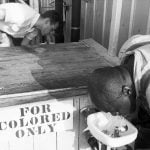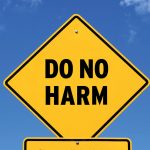Problems With Harm Minimisation, Part Two
Here I examine more problems with the harm minimisation approach to drug use. I finished Part One with the claim that this is a failed approach. Before exploring further reasons, let me speak to this a bit more.
The “get tough” approach has also proven to be quite effective in the United States. In the 70s the message was, drug use is OK. But then the US decided to get tough on drugs. Consider some figures: Those 12 years and older who used drugs on a monthly basis in the US in 1979 were 25 million people (14 per cent of the population). In 1998 that figure dropped to 13.6 million (6 per cent of the population).
In Melbourne, a recent campaign by the police to get tough on drug hotspots has seen heroin deaths decline by almost one-third. And in Australia the government’s tough approach to drugs has resulted in an actual decline in all types of illicit drug use. The report – the Australian Institute of Health and Welfare’s 2001 drug strategy household survey – clearly indicates that the zero-tolerance approach is working.
Moreover, a recent study published in the Medical Journal of Australia found that the heroin drought, brought about by the get-tough-on drugs policy, including a concerted crackdown on drug importation, has resulted in a 63 per cent drop in ambulance call-outs to non-fatal heroin overdoses and a corresponding 40 per cent decline in the number of cases seen at emergency departments between 1995 and 2003.
6. It opens the door to the full legalisation of drugs.
Many of those who advocate harm minimisation or harm reduction also argue for what they call the “responsible use” of drugs. They claim that get-tough programs, or prevention-based programs, have not worked, and we need to de-criminalise drug use. They argue that instead of seeking to prohibit drug use, we should educate people about the responsible use of drugs.
A clear example of this can be seen in Victoria, which is currently debating the opening of five heroin injecting rooms in and around Melbourne. Professor David Penington, who leads the Drug Policy Expert Committee, has been a strong advocate of these radical measures. But what is less well known is his public support of drug legalisation. In the July 31 1996 Australian he is quoted as follows: “I believe in an ideal world we ought to reach that point (of decriminalising all illicit drugs) but I think we can only reach it step by step”. He continued: “In the long run, I believe removing the criminal penalties is the only way of overcoming the very dangerous and damaging illicit trade which in its own right causes so much harm in our society”.
At a public forum held in May 2000, Professor Penington’s words were read to him, and he was asked if he still believed that all drugs, including heroin, should be legalised. He repeated his conviction that they indeed should be, but that it would take time.
7. If full legalisation is achieved, it will increase the pool of drug users.
There is no way to enact the legalisation of drugs without greatly increasing the number of users. By removing the penalties for usage, and by (in theory) reducing the costs, demand will increase. This is a simple function of supply and demand: make something easier and cheaper to obtain, and you increase the number of people who will try it. At the moment there are millions of alcohol and tobacco users in Australia, but only thousands or tens of thousands of illicit drug users. The main reason for the difference in numbers is related to the legality or illegality of the drug. Keeping drugs illegal keeps the number of users down, while legalising drugs increases the pool of users.
Consider some recent figures. Five per cent of all Australians use marijuana on a weekly basis, compared to weekly alcohol users (66 per cent). The former is illegal, while the latter is not. In America there are 14,000 people killed a year by illicit drugs, but 500,000 killed a year by licit drugs. Moreover, in the US marijuana use is down by 50 percent, cocaine use is down by 79 per cent and alcohol use is down by 13 per cent, all because of the get-tough approach to drugs. These figures tell us that criminal sanctions deter illicit drug use, and that the war against drugs is far from lost, as some claim.
Ironically, one person advocating drug legalisation is also a world authority on market forces. Nobel Prize-winning economist Milton Friedman said some years ago, “Legalizing drugs might increase the number of addicts, but it is not clear that it would. Forbidden fruit is attractive, particularly to the young.” But as James Q. Wilson wisely pointed out, “I suppose that we should expect no increase in Porsche sales if we cut the price by 95 percent, no increase in whiskey sales if we cut the price by a comparable amount – because young people only want fast cars and strong liquor when they are ‘forbidden’.”
Also, we know that keeping an activity illegal deters people from partaking in that activity. Remove the penalties or sanctions, and many more people will take up the activity. We can learn from history here. After Europe imposed the opium trade on China in the mid-19th century, by 1900 there were an estimated 90 million opium addicts in the nation. When British physicians could write prescriptions for heroin in the 60s, the nation’s junkies increased thirty to forty-fold.
In Holland, where marijuana is openly sold in over 1500 “coffee houses,” drug addiction has become a massive problem – so much so that Dutch authorities are now having a rethink. They are now clamping down on a problem which is getting out of control. Acknowledging that drug-related offences and links with organised crime are on the rise, the Dutch Government will drastically cut the amount of cannabis that can be sold in the coffee houses, and more jail cells will be built.
The liberalised policies in the Netherlands have made drug use among young people increase dramatically. Monthly prevalence use amongst 12 to 18 year-olds increased from 2 per cent in 1992 to 11 per cent in 1996. Dr Frans Koopmans, who is the director of a drug rehabilitation centre in Dordrecht, puts it this way: “Our liberal drug policy has been a failure”.
Conclusion
For these and other reasons, the harm minimisation approach must be seen for what it is: a failed policy which causes more harm than good. There are better ways to deal with the illicit drugs scourge, and they are certainly worth looking at more closely by our policy makers.
Part One of this article is found here: https://billmuehlenberg.com/2014/02/17/problems-with-harm-minimisation-part-one/
[1121 words]




















The “harm” was already done by modernist philosophers and theologians who told us God is dead and the resurrection of Jesus of Nazareth was allegedly a pious myth: An open door for Prof. Timothy Leary and his “make your own religion” approach to the post-Christian shell of Western culture – where psychedelic drugs were supposed to become the new sacraments of religions where the devotees “turned on, tuned in and dropped out”. The ultimate root of the drug problem is the aching spiritual vacuum left by Western secularism in the souls of its followers.
I am so glad God did not take the “harm minimisation” approach when it comes to sin, but put an end to it once and for all by His death on the cross. If he hadn’t, he would have given sin and thereby the devil a legal foothold.
Harm minimisation means tolerance of harm in some way which we may in our ignorance or misguided compassion consider tolerable. But God knows even the smallest amount of sin separates us from Him forever and therefore spells eternal death. These “harm minimisation” proponents don’t understand eternal life. Therefore they will support anything as long as it doesn’t physically kill a person or so they think, for even the statistics prove otherwise.
Many blessings
Ursula Bennett
How deceived that poor young man was! Obviously the fact of his suicide proved which spirit it was he was listening to. Obedience to the Holy Spirit leads to life though the way to life leads through physical death.
I only pray the people in charge would listen to what you are saying, Bill.
Many blessings
Ursula Bennett
In addition to my comments about crack pipe vending machines in Vancouver, BC in Part 1…the saga of ignorance continues:
http://news.nationalpost.com/2014/02/19/vancouver-drug-centre-teaching-alcoholics-to-brew-their-own-beer-so-theyll-stop-drinking-mouthwash/
“Launched six months ago, the alcohol co-op supplies members with five litres of home-brewed beer or wine each month…five litres, he says, lasts him for about a week.”
“As the drinking community becomes aware of what we’re doing, we’re obviously having to expand the program,” said Kailin See, director of the centre.”
So much for harm “minimization” …